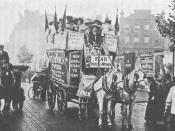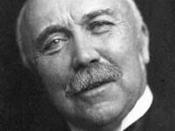Women's Emancipation
Marriage and divorce for women
In the 19th century the expectation of women was that they would get married and have children. However there was a shortage of men, which made this quite hard for the women. This was due to the lower mortality rate in men, men in the army and they were more likely to emigrate than women.
Laws based on the fact that women would be the responsibility of the men and would be looked after by the man.
Before the 1882 Married Property Act, when a woman got married, all of her wealth was passed to the husband. If a woman worked after marriage her earnings would also be given to the husband
Matrimonial Causes Act of 1857 gave men the right to divorce their wives if they were found to be committing adultery. However if the woman wished to divorce their husband, it was not allowed, even if they had discovered that their husband had been unfaithful.
Once divorced, the children would be the husband's property and the wife could be banned from seeing her children.
Working class women were expected to keep working until they had children. In the middle of the 19th century the average married woman gave birth to six children. Over 35% of all married women had eight or more children.
Education of women
1880's - Mary Wollstonecraft had written the book, Vindication of the Rights of Women, which argued for educational reforms.
Louisa Martindale was forced to abandon her own school for girls due to the harsh disapproval and opposition of the public.
Mary Francis Buss founded the North London Collegiate School for Ladies, offering education which would allow the women to have career opportunities.
1870 - Girton College was opened as the first women's college, but still...


